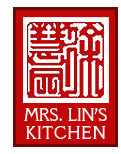|
Ukiyo-e, pictures of the floating world, often featured landscape motifs, beautiful courtesans and popular actors engaged in appealing activities. Hokusai, the subject of our June newsletter, is considered the pioneer of landscape woodblock prints. Further into his career, however, the emergence of another ukiyo-e artist threatened to lay claim to Hokusai’s reputation as one of the great masters of his art. It also raised the centuries old debate of: Hokusai or Hiroshige…who is truly the ukiyo-e master?
Utagawa Hiroshige, also known as Ando Hiroshige, was born Ando Tokutaro in 1797 in Edo, now present day Tokyo. His father was a samurai and an official in the fire-fighting organization assigned to protect Edo Castle from fire. When Hiroshige was 12, his father passed the position to him. Both his parents died several months later. At 14, he was given the opportunity to join the famous Utagawa painting school, headed by ukiyo-e master Toyohiro Utagawa. A year after joining, he was allowed to take the name Utagawa, and was known from then on as Utagawa Hiroshige. Hiroshige’s position as fireman offered stable work, but few duties. Legend says he was determined to become a ukiyo-e artist when he saw Hokusai’s prints, while others say he wanted to supplement his fireman income. What is known is that the year Thirty-six views of Mount Fuji was published, Hiroshige decided pass his position onto his son, as his father had done, in order to devote himself full-time to his art, and it wasn’t long before both he and Hokusai found themselves competing for the same customers.
Prior to ukiyo-e, Hiroshige’s early works involved book illustrations created in the traditional style he’d learned from his master. He soon moved onto creating prints of traditional subjects, such as young women and popular actors engaging in appealing activities. Influenced by Hokusai’s works, Hiroshige moved onto landscape prints, but based them on drawings he’d made while traveling. Although he won fame as a landscape artist, especially with his critically acclaimed landscape series, Famous Views of the Eastern Capital, it wasn’t until his most notable print series, Fifty-Three Stations of the Tokaido was published in 1833 that he achieved great success. Fifty-Three Stations of the Tokaido portrayed scenes on the highway that connected Edo and Kyoto. It was soon followed by Celebrated Places in Japan and Sixty-nine Stations on the Kiso Highway.
While his style was not as bold or innovative as Hokusai, Hiroshige’s prints had a poetic, gentle mood that appealed to the ordinary person. His landscapes were frequently shrouded in snow, rain, mist or moonlight.
Many critics considered the quality of Hiroshige’s later works compromised, possibly because Hiroshige had produced too many too quickly by that time in order to meet market demand. By the time he died in 1858 from cholera, Hiroshige had created over 5000 prints, and yet, despite having achieved commercial success, Japan did not embrace Hiroshige. Like Hokusai, Hiroshige’s reputation as an artist developed in Europe, and like Hokusai, his works greatly influenced many European artists, such as Monet. Even Van Gogh, a notable artist in his own right, copied two of Hiroshige’s works from One Hundred Famous Views of Edo. He recreated “The Plum Garden in Kameido” and renamed it “Flowering Plum Tree”, while “Great Bridge, Sudden Shower at Atake” was re-worked into “The Bridge in the Rain”.
Today, many of Hiroshige’s prints can be found in major museums in Tokyo, London, New York City and Boston, as well as in private collections. Mrs. Lin’s Kitchen carries several sake sets and teaware featuring some of Hiroshige’s greatest prints, as well as a book featuring a collection of his works. Compare his prints with those of Hokusai to help you decide for yourself who is truly the ukiyo-e master.
|
|
|
OUR 2008 NEWSLETTERS
Simple Feng Shui Remedies
Guide to Economical Holiday Shopping
Utamaro: Master Printmaker and Painters
Three Easy Eastern remedies
Unraveling Colors of Asia
Hiroshige: Following in the Footsteps of Hokusai
Hokusai: The Man behind the Art of Block Printing
Throw an Asian-Themed Party
Celebrating Cherry Blossom
The Seven Lucky Gods of Japan
Chinese New Year 2008 : Year of The Rat
Valentine's Day Gift Guide
All Hail the Sumo Wrestler
NEWSLETTER ARCHIVES
2012
2011
2010
2009
2008
2007
2006
2005
2004
2003
2002
2001
MAY WE SUGGEST:
|


